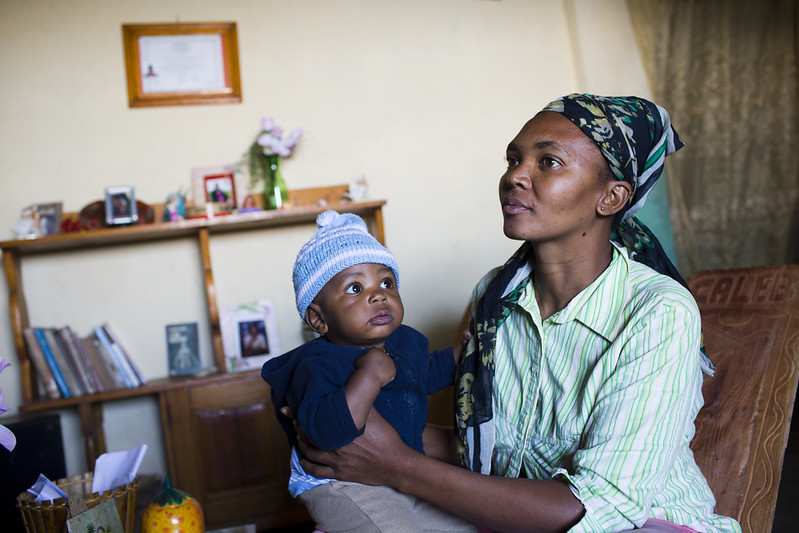Understanding Provider Bias in Family Planning

Provider Bias in Family Planning Services: A Review of Its Meaning and Manifestations by Solo and Festin was the most popular family planning article of 2019 in the Global Health: Science and Practice journal. This post draws from that article to summarize the different types of provider bias, how widespread it is, and how it can be effectively addressed.
What is provider bias?
Everyone has biases—personal and unfounded judgments or prejudices. These biases are often the result of culture, religious beliefs, or a lack of accurate knowledge. They can be explicit (conscious and intentional) or implicit (unconscious and unintentional).
In the context of family planning, provider bias toward certain characteristics of a client and/or a specific contraceptive method can affect clients’ informed choice to choose the method that best meets their needs. In order to address provider bias in family planning programs, we first need to agree on and understand what provider bias is.
The authors of Provider Bias in Family Planning Services: A Review of Its Meaning and Manifestations proposed the following definition:
[ss_click_to_tweet tweet=”Provider bias refers to attitudes and subsequent behaviors by providers that unnecessarily restrict client access and choice, often related to client and/or contraceptive method characteristics.” content=”Provider bias refers to attitudes and subsequent behaviors by providers that unnecessarily restrict client access and choice, often related to either client and/or contraceptive method characteristics.” style=”default”]
We say proposed because there are several variations of this definition, but currently there is no agreed upon definition of provider bias as it relates to family planning services.
Although client and method-related biases can be defined as discrete experiences on paper, in reality they are inherently interconnected. For example, biases against providing a certain type of method, such as the IUD or implants, are typically directed toward certain types of clients, such as young, unmarried women who have not yet had children. These biases are often due to cultural beliefs about the appropriate age to begin sexual relations or about the need to prove fertility before starting contraception.
How is provider bias related to method choice?
Many providers restrict access based on reasons beyond those outlined in guidelines or deemed medically necessary. This can negatively affect a client’s ability to make an informed choice and can lead to the use of less effective methods and higher risk of pregnancy. While it’s difficult to measure informed choice, there are proxies, such as the Method Information Index, to assess whether clients received complete information about their options when they selected a contraceptive method.
How can you identify provider bias?
Provider bias has mainly been identified and measured through either in-depth interviews with providers who self-report on their behaviors or through mystery clients seeking services. However, in some instances, method mix may be able to help identify potential provider bias issues that warrant further investigation. For example, provider bias may be playing a role if over 50% of contraceptive users in a country are all using the same method. However, method skew may also be the cause of other issues such as deeply rooted cultural preferences or supply chain issues.
What are best practices for addressing provider bias in family planning programs?
We know that the provision of information or training alone is often not enough to change a provider’s behavior. We also know that despite ample guidelines, many providers impose requirements outside of those recommended. However, there are several principles that show promise when addressing provider bias:
- Don’t blame providers. Providers, like all people, have inherent biases (whether they act on them consciously or not), and in most circumstances, providers are doing what they feel is in the best interest of their client. Programs should not use a judgmental tone or assign blame to providers but rather provide a supportive environment to explore how their personal biases may negatively affect their clients.
- Leverage champion providers. Providers who are champions for informed choice can serve as role models or trainers for other providers.
- Encourage behavior change among providers. Implement social and behavior change programs that promote innovative strategies to identify and understand providers’ values, practice empathy, and understand their role of helping clients choose the best method for themselves regardless of the providers’ personal biases.
- Include authoritative statements in national guidelines about nondiscrimination. For example, specifically include a statement that age, parity, marital status, and other characteristics alone do not constitute a medical reason for denying contraception.
- Explore ways for providers to present contraceptive methods with minimum bias. One example of this would be presenting the various methods in order of effectiveness, beginning with those most effective as in the WHO-tiered effectiveness chart.
Conclusion
Whether or not there is an agreed upon definition of provider bias, there is agreement that provider bias affects informed choice and needs to be addressed in order to reach our global family planning goals.





